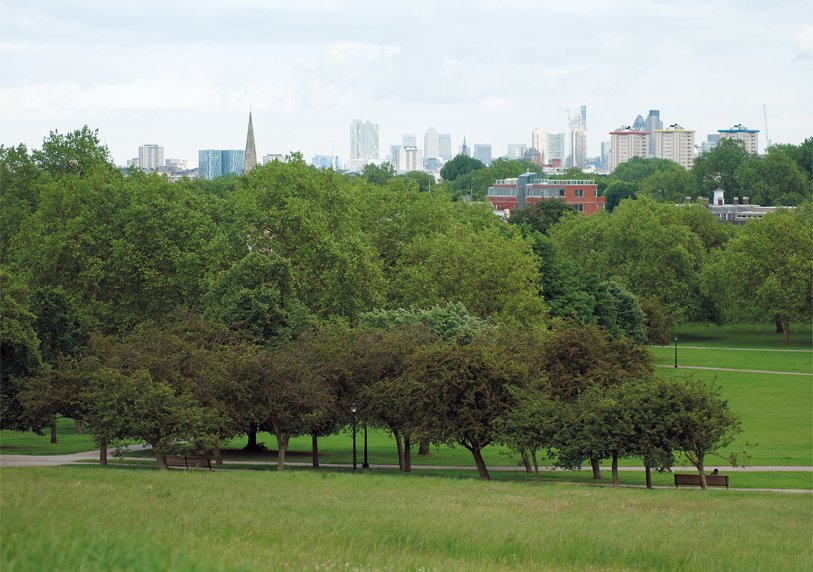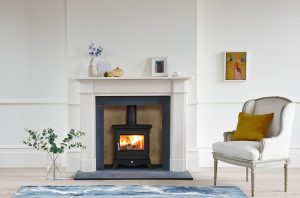

Is your stove good for the environment? Having a toasty fire to relax beside at home has become incredibly popular. It’s now estimated that 10% of UK homes have an open fire or wood-burning stove. That amounts to more than 2.5 million homes. While the majority of households are considerate when it comes to limiting the pollution levels from their stoves and open fires, many areas are beginning to feel the effect that poorly maintained or incorrectly used domestic fires can have.
To counteract this, the Clean Air Act allows local councils to designate particular regions as smoke control areas, placing regulations on appliances that emit chimney smoke unless they are certified by the Department for Environment, Food and Rural Affairs. For more information on wood burning regulations, see our guide to using your stove in the South West. The good news is that each of Chesneys’ wood burning stoves and multi-fuel stoves possess a DEFRA-exempt status, which means that you can continue to use them regardless of where you live. Nonetheless, there are still a number of steps that stove owners can take to ensure that they are as eco-friendly as possible. To help, we’ve listed a few below.
CHOOSE THE RIGHT TYPE OF FUEL FOR YOUR STOVE
Not only will burning the wrong type of fuel impact the environment, but you could also potentially damage your stove by releasing harmful particulates that fuel-burning appliances aren’t designed to handle. The most popular fuel to burn at home is wood. As well as being widely available and attractive to look at, wood is a renewable, carbon-neutral and sustainable energy source. Burn it using a DEFRA-exempt stove, and you won’t release any more particulates than the tree would produce while decomposing naturally. What’s more, burning wood in an energy-efficient stove can be much cheaper than warming up your home using a central heating system.

In order for wood to burn effectively, it needs to have been properly seasoned. Its moisture content should be 20% or lower, which can be achieved by seasoning (drying out) logs in a dry environment for at least a year, and checking the wood before burning using a moisture meter. If you don’t have a moisture meter to hand, you can check whether the wood has been correctly seasoned by looking at the bark. If it’s dry enough to burn, the bark should come away easily in your hand, and the log’s grain will show noticeable splits. The type of wood you select is equally as important, as not all wood burns equally. Some logs are better for the environment than others, producing fewer particulates when burned and maintaining a high temperature without creating excessive sparks. For the most eco-friendly option, choose a high-grade wood such as ash, hawthorn, apple, beech or cherry can reduce the amount of smoke produced in your log burner.
Discover more on how to use and maintain your wood burning stove.
SELECT A DERFA-EXEMPT STOVE
Stoves are far less damaging than open fires when it comes to the environment. DEFRA-exempt stoves such as those designed by Chesneys work by pre-heating the air that enters the chamber, producing 90% less particulates than an open fire. For this reason, the best way to ensure that your log burner does not harm the environment is to choose a DEFRA-exempt appliance. This will mean that your stove has been carefully tested for emission levels, and has been proven to achieve a high level of energy efficiency. It also won’t have cut any corners in terms of air circulation or particulate reduction, so you can be sure that your DEFRA-exempt stove is safe and legal to use. Each Chesneys multi-fuel and wood burning stove is equipped with specialist clean-burn and air-wash technology to limit the particulates that escape through your chimney. Burning wood and smokeless fuels in one of Chesneys’ DEFRA-exempt stoves could prove to be the most cost-effective and eco-friendly option, reducing your reliance on gas or electric heating that’s typically powered by fossil fuels like coal and natural gas. Find out more on how to use and maintain your wood burning or multi-fuel stove.

OTHER ENVIRONMENTAL CONSIDERATIONS FOR STOVE OWNERS
Alongside selecting an eco-friendly stove and fuel, it’s also important to ensure that your stove is properly maintained to reduce environmental damage. Stoves that are not regularly cleaned to remove creosote and soot will be less efficient and release more particulates, so do your bit for the environment and ensure that your stove is kept in good working order. The same goes for your chimney – this should be swept twice every year by a NACS certified chimney sweep to reduce the risk of blockages, which can lead to chimney fires. Sourcing your wood from suppliers who replant the trees they cut down is another responsible way to help the planet while using your wood-burning stove. Trees release oxygen and provide a habitat for wildlife, so by opting for a supplier who cares about the continued growth of forests and woodland, you’ll be contributing to the environmental health of your area.
For a stove with the perfect balance of sustainability, reliability and sophisticated design, choose a Chesneys model. You can browse the full range of Chesneys stoves on our website, or by visiting your local stockist.
Need help?
If you need more information or some assistance making a selection from our large range of products, don’t hesitate to get in touch.
Stoves
Chesneys have a range of accessories that include contemporary and traditional fire tools, fire screens and a selection of interior panels
